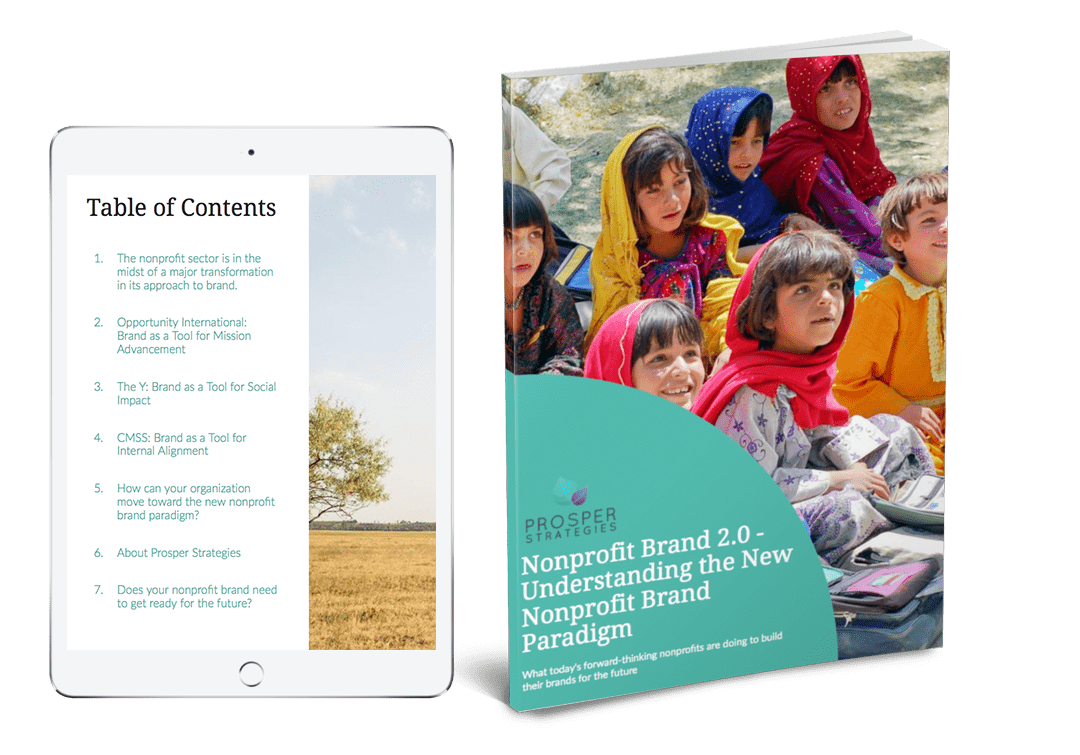Recently, a friend of mine tweeted: “Stop calling disadvantaged kids disadvantaged kids.” It’s succinct, powerful and also relevant to what I do every day here at Prosper. As marketing and communications professionals working with nonprofits, it’s important for us to consider how we frame narratives about our clients, the work they do and the people and communities they support.
Language can both reflect and shape reality. That means you have to be careful how you use your words to reflect the world you live and work in, as well as how you want to shape it for the better. As a nonprofit seeking to have a positive influence on the world, what you say about what you do matters almost as much as what you actually do. How you explain a problem or a solution to someone will be the deciding factor in whether you convince them to support your cause, but it can also change their perceptions of the communities you serve, for better or for worse.
[bctt tweet=”Language can both reflect and shape reality.” username=”ProsperStrat”]We’ve discussed before why precise word choice matters in nonprofit messaging, but beyond that, you should take great care to communicate to your audiences about the people you serve in a way that is empowering.
The wrong language can further marginalization and discrimination, even if your organization seeks to dismantle it.
When you frame the communities you serve as an “other,” or portray them in a negative light as a way to demonstrate need, you’re only fueling perceptions that you likely want to change. To combat this, more organizations are shifting to “strengths-based” language as opposed to “needs-based.” This means that instead of only highlighting the problems a community faces, language reflects the potential and the promise of a brighter future that is possible with the proper resources and support.
Some descriptors of a community can be preferred over others, and individuals may have their own preferences within a community. For example, consider whether you should refer to someone as a “survivor” of violence or “victim” of violence. If you’re addressing or referring to a group in your communications and not able to ask for an individual’s preference, your organization can decide internally what makes the most sense in a given instance and create a brand voice style guide to reference.
Additionally, it is often considered best to use “people first” language, so individuals are not defined by their race, disability, economic status, sexual orientation, age or something else instead of their personhood. For example, saying “homeless people” is preferred over “the homeless,” and “people in prison” is preferred over “the incarcerated.”
[bctt tweet=”More organizations are shifting to “strengths-based” language as opposed to “needs-based.”” username=”ProsperStrat”]Ask yourself this question anytime you draft internal or external communications for your organization: Would the community we serve feel empowered and accurately represented by this messaging? If the answer is no, or if you feel like the people you are seeking to help could feel put down, write a second draft that inspires action instead of casting a shadow.
Preferred language changes, so it’s necessary to stay up to date and aware.
With the internet connecting individuals all over the country –– and world –– changes in language preference happen at a faster rate today than they did in the past. Consider, for example, the shift from LGBT to LGBTQ+ to be more inclusive of diverse, individual sexualities and gender identities. Further, consider how different ethnic or racial minority groups prefer to be referred to, down to capitalization of words. Or, take notice and be ready and willing to make shifts when members of a community point out that a common word or phrase is actually derogatory because of its history.
Choosing to ignore or failing to stay up to date on changes like these can be harmful for the communities you serve. Ignoring their preferences can be an indicator to those communities that you’re overlooking their other needs as well, or that you don’t value their perspectives.
If you listen to and read the words of individuals from the communities you serve with an open mind and a desire to actively learn, it will be easy to keep your organization’s messaging on the right side of history. If you’re ever unsure, it’s okay to ask. Creating an open dialogue with the communities you aim to support about appropriate messaging can be impactful in and of itself.
To ensure consistency across communications, create a progressive messaging style guide for your organization.
Depending on the unique preferences of the community you serve, you should create a style guide for everyone in your organization to follow. You can look to examples like the Progressive Style Guide by SumOfUs, the National Association of Black Journalists’ Style Guide, GLAAD’s Media Reference Guide and the Disability Language Style Guide from the National Center on Disability and Journalism. Because of the dynamic nature of language, be prepared to make changes based on progressive messaging preferences at any time.
Finally, and perhaps most importantly, be open and honest about the fact that you’re constantly learning. If your organization is not led by any people of color, queer people, disabled people or others with a diverse point of view, you’re bound to make mistakes. And sometimes, individuals can accidentally misrepresent the interests their own communities. Acknowledge those mistakes, listen to your staff and volunteers who are members of these communities, and clearly articulate what you’re doing to address your past failings in your ongoing communications.
Today’s nonprofits leverage marketing for more than fundraising.
